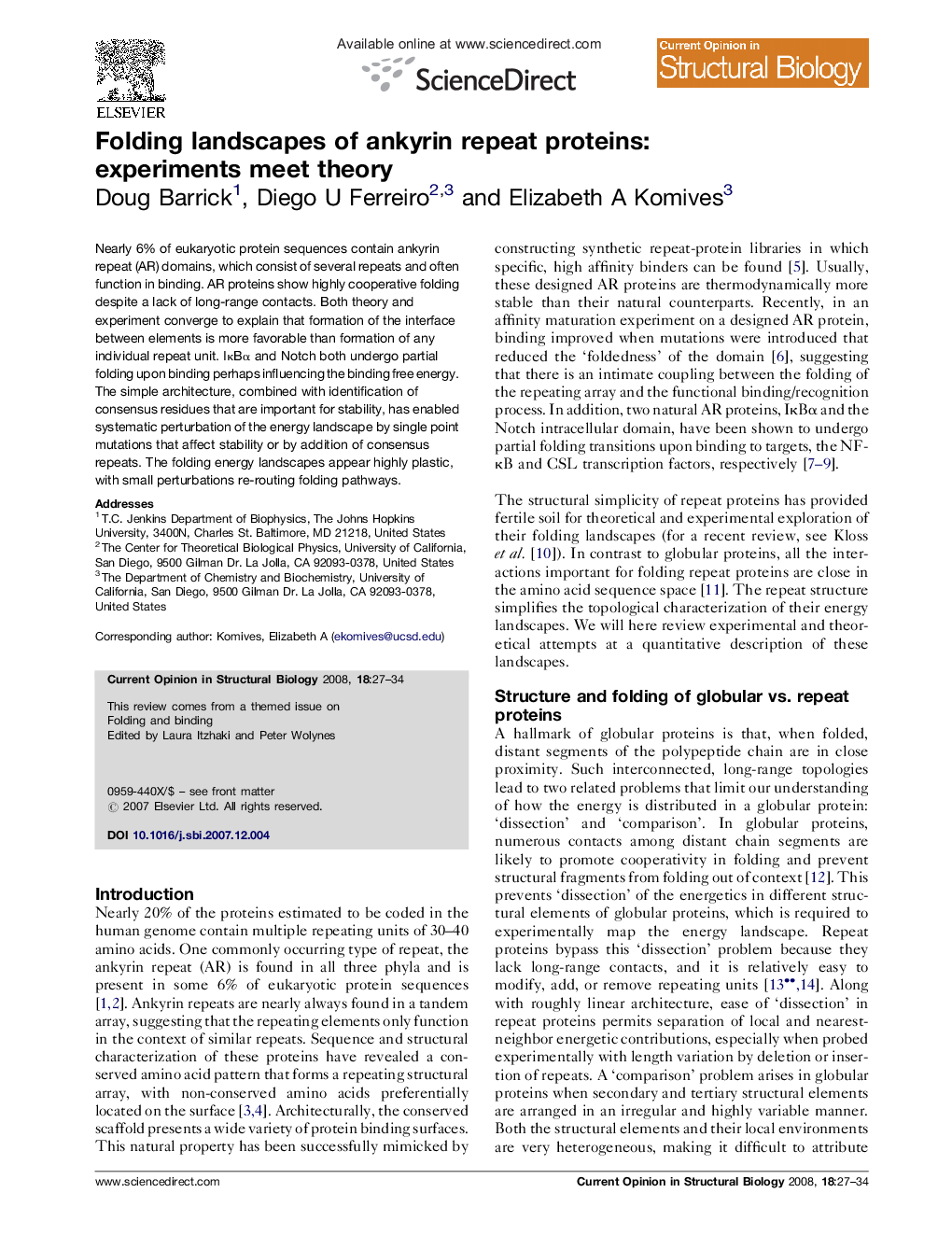| Article ID | Journal | Published Year | Pages | File Type |
|---|---|---|---|---|
| 1979549 | Current Opinion in Structural Biology | 2008 | 8 Pages |
Nearly 6% of eukaryotic protein sequences contain ankyrin repeat (AR) domains, which consist of several repeats and often function in binding. AR proteins show highly cooperative folding despite a lack of long-range contacts. Both theory and experiment converge to explain that formation of the interface between elements is more favorable than formation of any individual repeat unit. IκBα and Notch both undergo partial folding upon binding perhaps influencing the binding free energy. The simple architecture, combined with identification of consensus residues that are important for stability, has enabled systematic perturbation of the energy landscape by single point mutations that affect stability or by addition of consensus repeats. The folding energy landscapes appear highly plastic, with small perturbations re-routing folding pathways.
